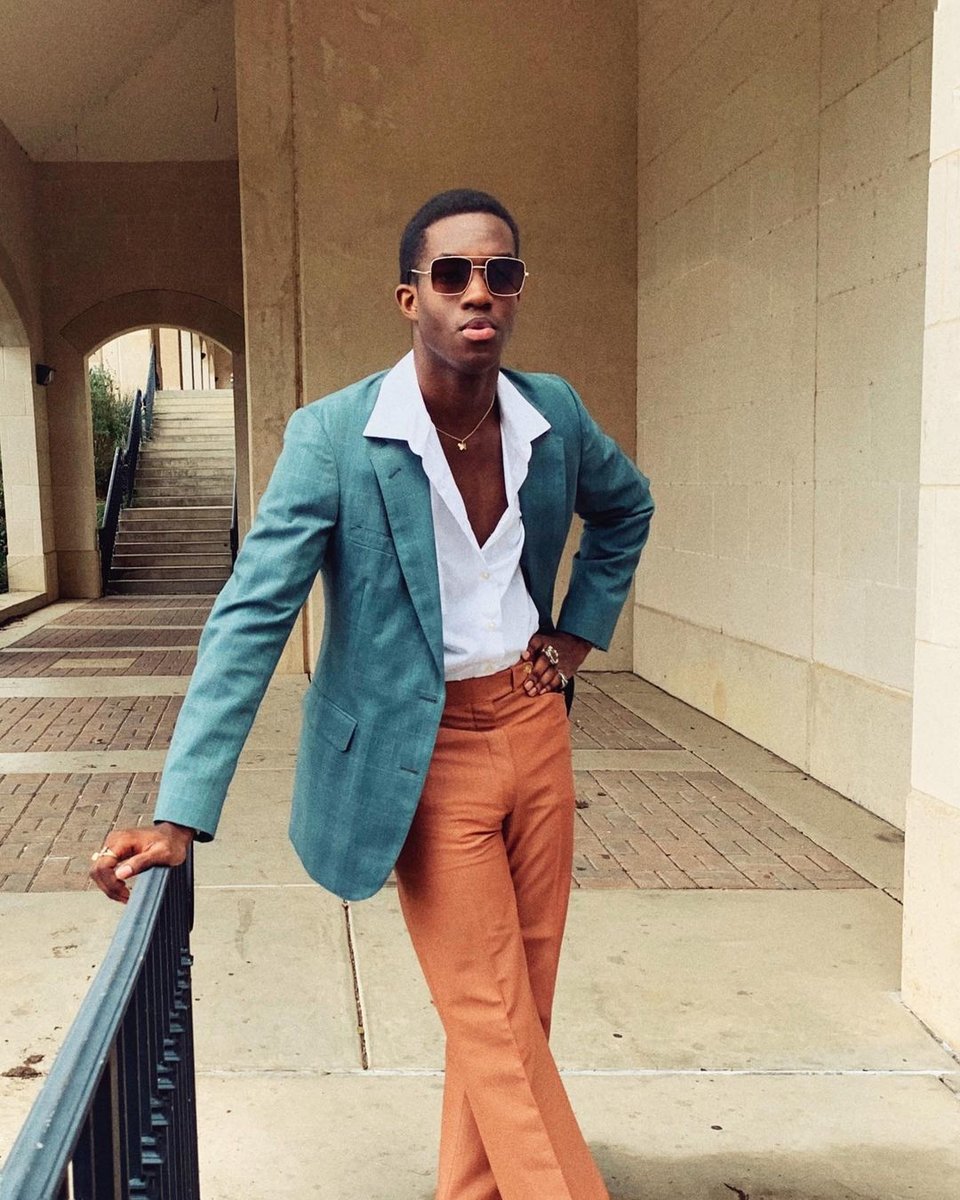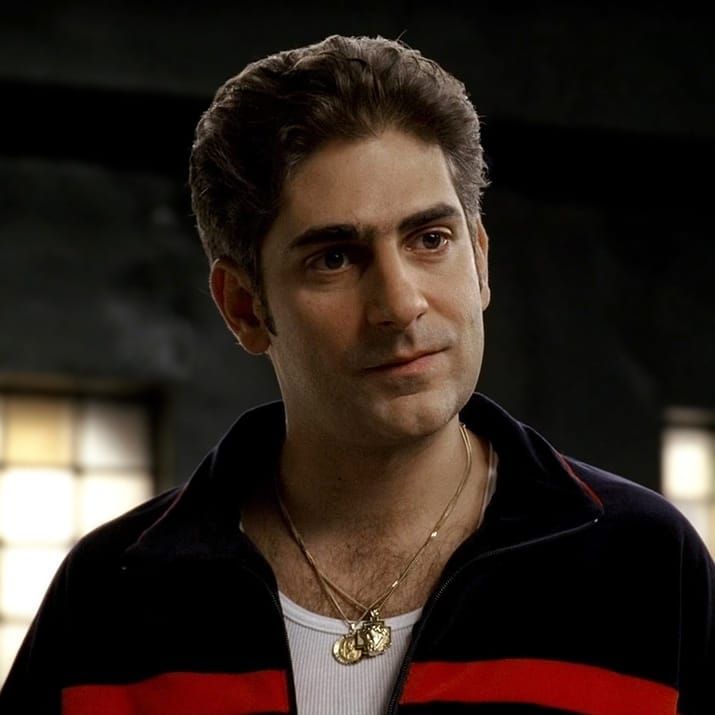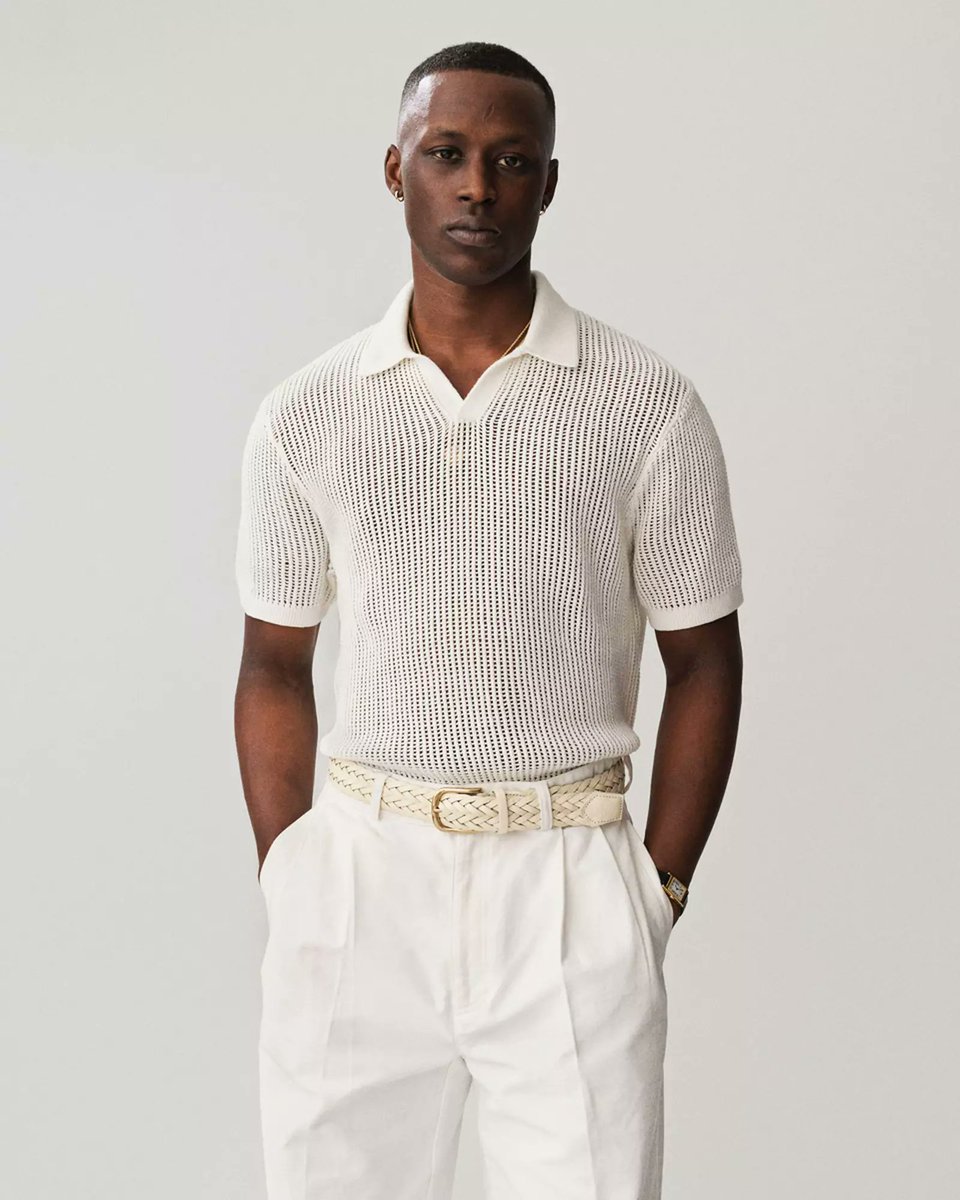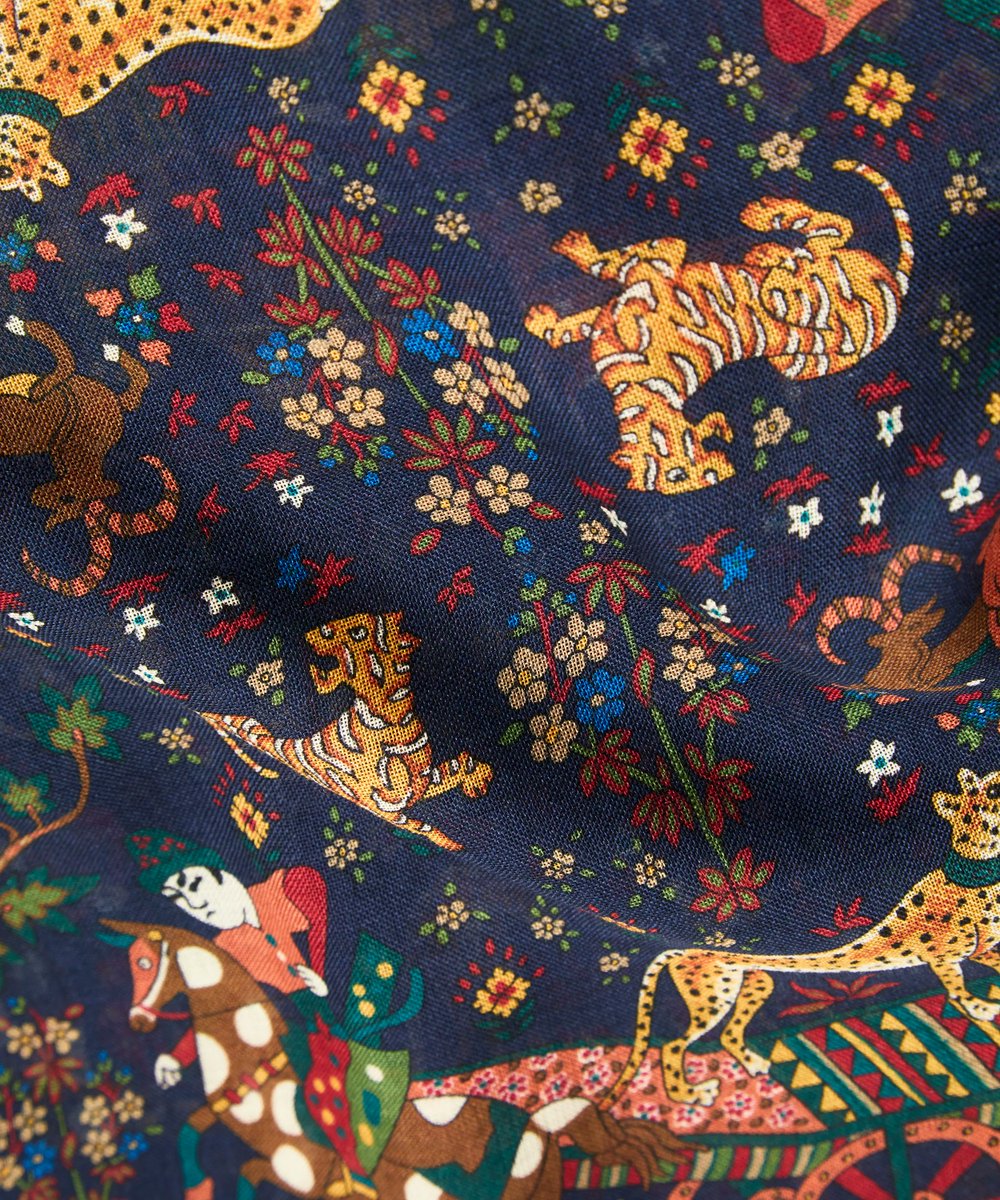I'll give this a shot. Ideas threaded below 🧵
https://twitter.com/1929stockcrash/status/1641461467248738306
70s Tailoring
I know 70s tailoring has a bad reputation ("the decade taste forgot"), but you can pull some elements in a way that will look good today: slightly structured shoulder, longer jacket, flared pants. Can be colorful or muted

I know 70s tailoring has a bad reputation ("the decade taste forgot"), but you can pull some elements in a way that will look good today: slightly structured shoulder, longer jacket, flared pants. Can be colorful or muted


Low Cut T-Shirts
Affectionately called "slutty tees" on menswear forums, these can be worn with directional tailoring or certain types of casualwear (e.g. Margiela). Here you see it with E. Tautz tailoring. Be careful with washing. Delicate tees need laundry bags.



Affectionately called "slutty tees" on menswear forums, these can be worn with directional tailoring or certain types of casualwear (e.g. Margiela). Here you see it with E. Tautz tailoring. Be careful with washing. Delicate tees need laundry bags.




Silky Shirts
A silky shirt—made from actual silk or an alternative like rayon or Tencel—will make you feel like Richard Gere in American Gigolo. Unbutton the first two top buttons if you want to look slutty. Pair with a cool pair of pants (I like Lemaire) or casual tailoring.
A silky shirt—made from actual silk or an alternative like rayon or Tencel—will make you feel like Richard Gere in American Gigolo. Unbutton the first two top buttons if you want to look slutty. Pair with a cool pair of pants (I like Lemaire) or casual tailoring.

Wrangler Wranchers
They're like $30, cool looking, and let you experiment with a 70s silhouette. Size-up two in waist and take regular inseam. Best in black, brown, or taupe. Wear with Western denim shirts, rayon shirts, trucker jackets, etc. Note they're pure poly

They're like $30, cool looking, and let you experiment with a 70s silhouette. Size-up two in waist and take regular inseam. Best in black, brown, or taupe. Wear with Western denim shirts, rayon shirts, trucker jackets, etc. Note they're pure poly


Giant Sunglasses
These will make you feel like a movie star. I love the ones from Jacques Marie Mage, but they're dearly expensive (please don't SCREAM AT ME). The Molino and Taos are good places to start.



These will make you feel like a movie star. I love the ones from Jacques Marie Mage, but they're dearly expensive (please don't SCREAM AT ME). The Molino and Taos are good places to start.




Five-Inch Inseam Shorts
Wear them with long-sleeved tees, thin merino knits, or sweatshirts in the late spring, along with slip-on shoes such as camp mocs, espadrilles, penny loafers, or huaraches.
Wear them with long-sleeved tees, thin merino knits, or sweatshirts in the late spring, along with slip-on shoes such as camp mocs, espadrilles, penny loafers, or huaraches.

Gold Chain
They go with surprisingly everything short of a conservative suit: Westernwear, tracksuits, prep, casual suits, etc. You can either go thick or thin for the chain. I'm partial to handmade Cuban link chains from Miami (IMO, 7mm is a good width).



They go with surprisingly everything short of a conservative suit: Westernwear, tracksuits, prep, casual suits, etc. You can either go thick or thin for the chain. I'm partial to handmade Cuban link chains from Miami (IMO, 7mm is a good width).




Mesh Shirts or Retro Styled Knits
Wear them over a ribbed tank top or a t-shirt. There are also mesh polos if you're more daring. If you do this right, you will look like a declious Asian pear.



Wear them over a ribbed tank top or a t-shirt. There are also mesh polos if you're more daring. If you do this right, you will look like a declious Asian pear.




• • •
Missing some Tweet in this thread? You can try to
force a refresh




































